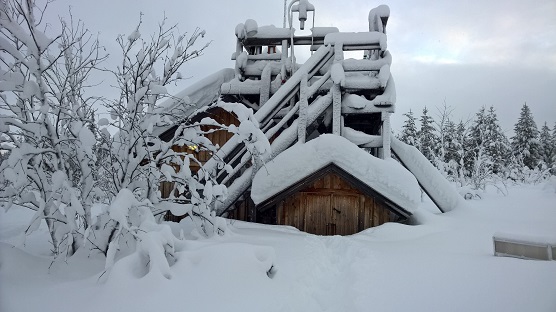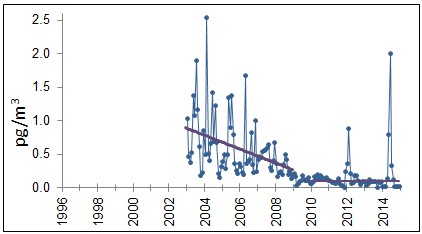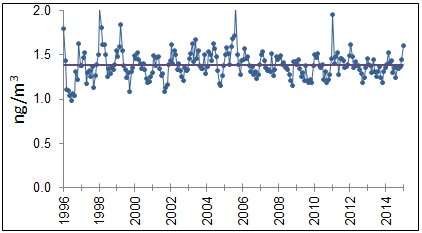Press release 2016-02-23 at 9:02

Pallas measuring station in winter 2016
Press release from the Finnish Environment Institute (SYKE), the National Institute for Health and Welfare and the Finnish Meteorological Institute
There is little information available on the presence and concentration of contaminants commonly used in consumer goods in the living environment. The Finnish Environment Institute (SYKE), the National Institute for Health and Welfare and the Finnish Meteorological Institute have launched an assessment on the presence of mercury and organic pollutants in Finnish Lapland.
The substances covered by the investigation are used in consumer goods, such as home entertainment electronics, textiles, and construction materials. Many of these substances – including many brominated flame retardants – were identified as persistent and bioaccumulative contaminants with potential for long-range transport as late as in the 2000s. In addition to this, many commonly used fluorinated surface-active agents are suspected of having harmful environmental or health effects.
“If we do not have enough reliable and comparable research and monitoring data on contaminants with sufficient local and national coverage, we cannot assess exposure or develop risk reduction measures. Furthermore, we cannot prove that there is no risk”, says Jaakko Mannio, Head of Unit at the Finnish Environment Institute and coordinator of the study.
National and international restrictions and the implementation of advanced technologies have lowered the concentrations of so-called legacy contaminants, such as pesticides and many industrial chemicals. The use of certain flame retardants was prohibited over ten years ago, which is reflected in the time series from the Finnish Meteorological Instituteʼs air quality measuring station at Pallas (Figure 1).On the other hand, although mercury emissions, for example, have lowered in Europe thanks to reduced coal combustion, the mercury concentration has remained unaltered in Finland due to global emissions (Figure 2).
The national assessment provides detailed information on the long-range transported contaminants in northern Finland and on potential changes and future prospects. The research institutes will use the results to prepare a set of measure proposals related to the monitoring of harmful chemicals, risk management, biomonitoring and communication.
The project is being coordinated by the Finnish Environment Institute (SYKE), which is also responsible for collecting and interpreting the environmental data. The National Institute for Health and Welfare (THL) is responsible for the assessment of human exposure and health effects, and the Finnish Meteorological Institute (FMI) is responsible for the assessment of long-range transport and load trends of the contaminants. The institutes are jointly responsible for interpreting the data and preparing measure proposals based on them. The project is funded by the Prime Minister’s Office. The project will be completed in summer 2016.

Figure 1. Concentration of flame retardant PBDE-99 in the air. The use of this substance was prohibited in the EU in 2004. Time series at the Pallas measuring station, 2003–2014.

Figure 2. Concentration of gaseous mercury in the air. Time series at the Pallas measuring station, 1996–2014.
More information
Jaakko Mannio, Head of Unit at the Finnish Environment Institute SYKE, tel. +358 (0)29 525 1406, firstname.lastname@ymparisto.fi
Pia Anttila, LPh, Senior Research Scientist at the Finnish Meteorological Institute, firstname.lastname@fmi.fi, tel. +358 (0)50 368 6420
Hannu Kiviranta, Head of Unit at the National Institute for Health and Welfare, firstname.lastname@thl.fi,
tel. +358 (0)29 524 6361, +358 (0)40 541 1958
Poster
The Arctic Monitoring and Assessment Programme (AMAP) is an expert programme under the Arctic Council. Since its establishment in the 1990s, the aim of AMAP has been to monitor and assess the state of the Arctic environment, including the interdependencies between human health and the state of the environment. Finland’s strategy for the Arctic region requires updating the assessment on the current state and trends of contaminants in northern Finland.